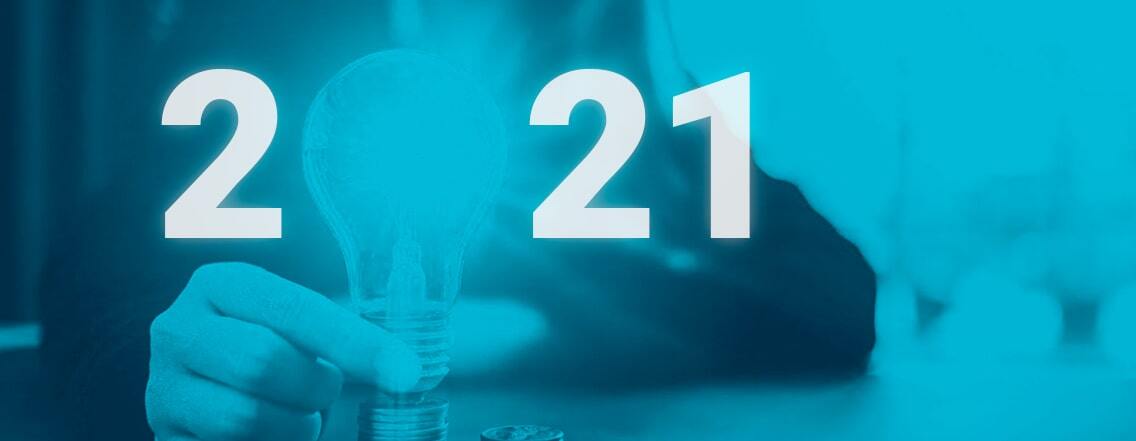The unexpected events of 2020 have accelerated digitalisation and introduced new forms of payments. According to a study by Statista, in the first months of 2020, digital payments grew 14% over the previous year.
Digital acceleration is just one example, but serves as the foundation for 2021 payments trends. Some changes will stay in place or evolve during this year. At SlimPay, we have identified 5 payment trends for 2021.
1. Payments and services go remote
The pandemic impacted all aspects of our lives, including our relationship with payments. The full impact of lockdowns on businesses is yet to be seen, considering the ongoing in-store closures or the few in-store purchases like groceries, contactless payments were the preferred method.
Enterprise companies had to rethink their business models, taking into account the needs of customers. Small merchants had to move their offline models online. Businesses that offered face-to-face services, like gyms, had to innovate to avoid churn. Neoness, for example, offered remote fitness classes to its members with Neoness Live.
There has been an increase of 53% of consumers who decide to buy online and this trend will boom this year. Nonetheless, many companies have yet to make the switch to online services. Digitising processes is an urgent need and SlimPay can help you digitise the payment or customer acquisition process for your business.
2. Recurring payments are still in the race
Subscription services have already had great success in the past years. This business model has proven to be resilient and a lever for merchants to create sustainability, especially during the pandemic. A Zuora research showed that 87% of companies offering subscriptions have maintained their subscribers and even experienced acquisition growth in 2020.
A more flexible type of subscription emerged, without commitment and with membership options for a more personalised service.
One of the strengths of subscriptions is building a long-lasting, trust-based relationship between merchant and end consumer. Betting on membership options in 2021 will have enormous advantages both for customers, who will enjoy an individualised service, and for merchants, who can use the data collected to better serve their customers.
3. Buy now, pay later
There are new financing methods that enable customers to buy now and pay after a specified period of time or pay in installments. This type of financing has always existed, but the way we consume today has made it more pertinent than ever before. According to EY, 90% of people globally prefer to pay little by little than in one shot.
The financial industry is leading the way, such as Klarna, Clearpay, or the large credit card providers such as Visa with Visa Installments — all betting on adapted models.
4. PSD2 to accelerate account-to-account payments and biometrics-based authentication
PSD2 (Payment Services Directive 2) is a European regulation that aims to increase security for consumers with Strong Customer Authentication (SCA), and to encourage innovation with the introduction of Payment Initiation Service Providers (PISP).
Nearly 65% of European banks have increased their investments in PSD2 from 20% to 30% between 2019 and 2020. This is clearly showing the Payment Initiation Service (PIS) growth potential once merchants start implementing it. Account-to-account payments will grow as seen in the UK and the Netherlands with open banking and iDeal.
Regarding payment security standards introduced by PSD2, businesses are directly impacted by SCA. For card payments, the card number will no longer be considered as valid authentication and biometrics will be encouraged to reinforce security at the authentication step. Approving purchases via facial recognition or fingerprints will make the payment experience safer. More than 53% of consumers prefer the use of a biometric sensor instead of their card PIN.
5. Mobile commerce is on the rise
In 2021, 73% of e-commerce is expected to come from apps. In addition to the easy and interactive use, another important benefit for customers is that they offer a fast payment experience. Due to consumers’ preference for the mobile channel, merchants must adopt a payment strategy that can meet their customers’ habits and expectations. One solution is to offer several payment options whether you are on mobile or desktop. SlimPay already bets on the payment mix methods integrated directly into our responsive Checkout.
The events of last year served as a catalyst for the future of payments. Payments are now more flexible, faster and able to adapt to any occasion that presents itself in 2021. As a merchant, you should adapt these payment trends to maximise your business and SlimPay is here to guide you along the way.




